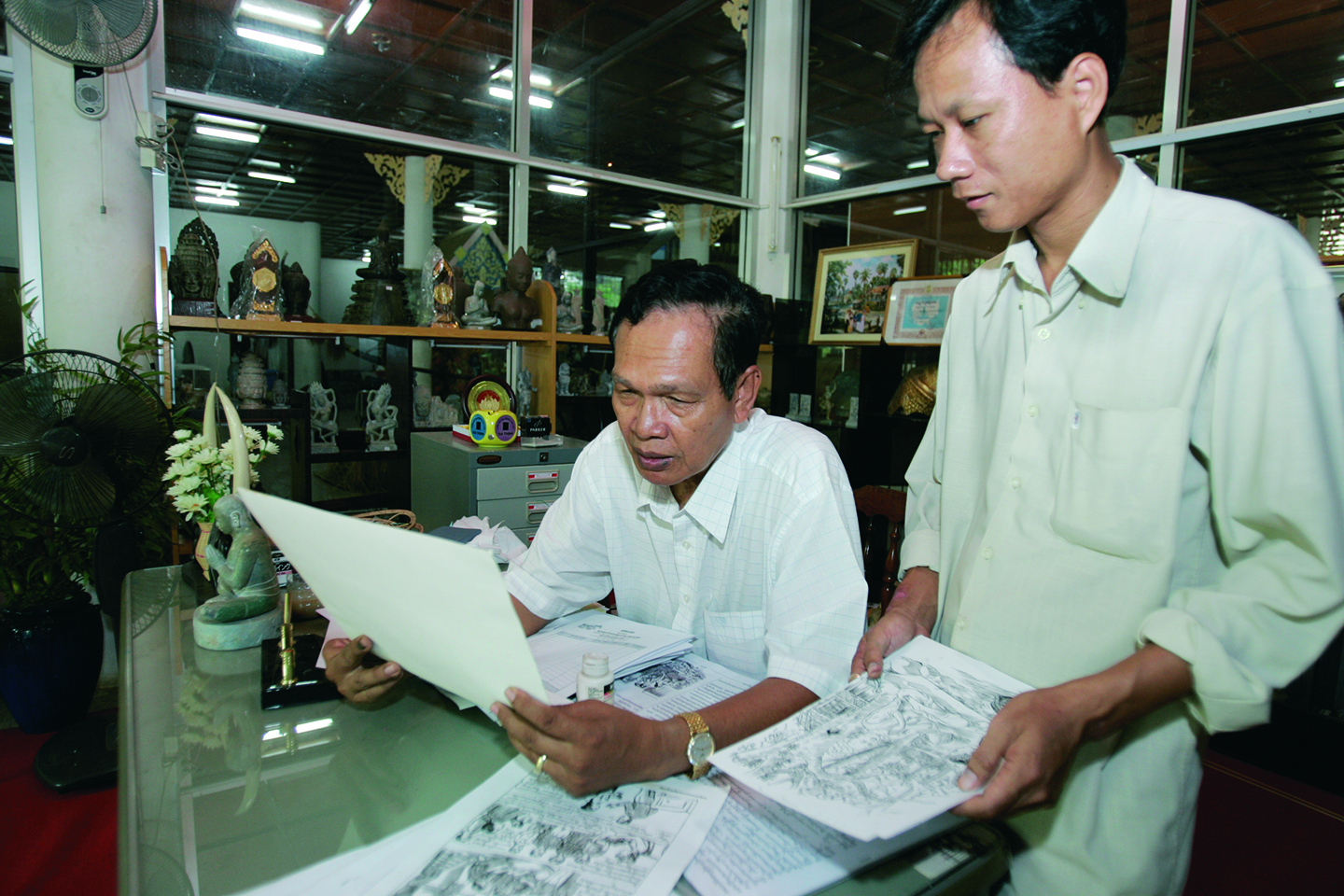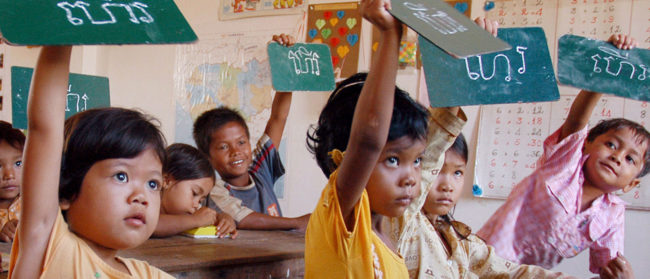Editor’s note: From tales of romantic entanglements to rebelling against tyranny, Cambodia’s comic books once enjoyed a flourishing golden age that transformed every street-side bookstore into a kaleidoscope of colour. But years of civil war and rapidly changing media has left many classic comic book artists fighting to keep the art form thriving. Now, for the first time, you can read their stories online.
Uth Roeun sits in his office at the Association of Cambodian Artist’s Friends at the foot of Wat Phnom, proudly leafing through the yellowing pages of some of the dozens of comics he has written and illustrated over the past four decades.
It is with a sense of loss that Roeun talks of how things have changed for comic book artists.
“I hope comics will be popular again but people don’t read as much now they have TV and video,” he says. “I can see the difference between now and the past. Before I printed 10,000 to 20,000 books but now I just print only 2,000 books and it is a problem to sell them”.
Comic sales may have declined since the mid 1990’s, but hunt through one of the bookstalls in a Phnom Penh market and you will still find reprinted editions of Uth Rouen’s comics.
His adaptations of the classical tales Tum Teav and Thmenh Chey that, dressed as romances, tell of the struggle of the poor against the tyranny of the powerful, are still being reprinted over 30 years on.
‘That is what people want’ they said, and so I started drawing pictures to go with my story and I started making money”
Sin Yang Pirhom, artist
Roeun is one of the few surviving artists of the 1960’s ‘golden age’ for Khmer comics. Along with many of his peers, his first comics were given to him by his French teacher. Roeun fondly recalls his art tutor Madame Greck and how she introduced him to comics.
“I was a student at Sisowath high school in 1962 and Madam Greck was teaching drawing,” he says. “She was professional, she was good at drawing and she showed me a lot of good French language picture books and stories. I thought that if I can do these books in Khmer language, how wonderful it would be. So I learned from her how to draw and how to write for five years”.
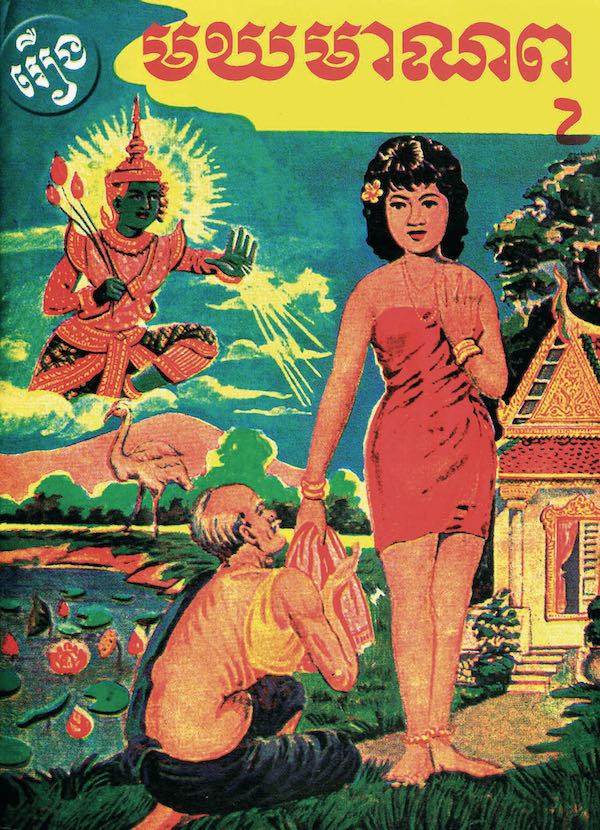
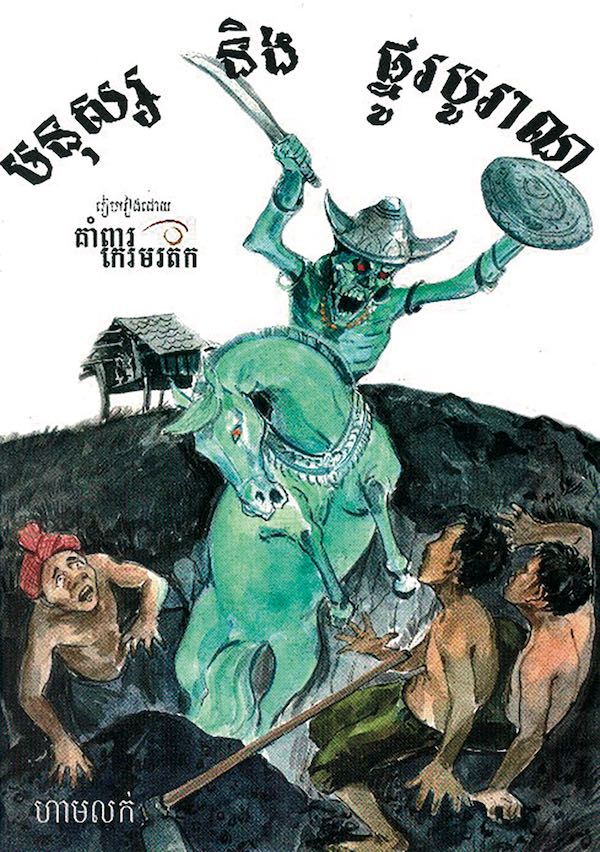
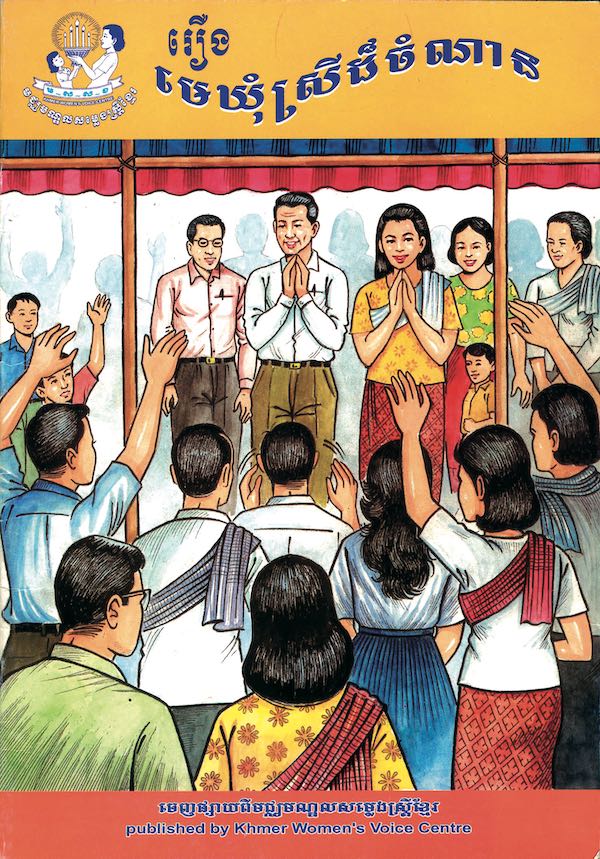
Other artists realised that there was an appetite for Khmer language comics and that their love for writing and drawing could earn them a living. Before long the capital’s mobile ‘library’ stalls and bookshop shelves were crammed with the brightly illustrated covers of local comics.
The revolutionary years brought an abrupt halt to the work of Rouen and the other comic book artists. But the art form proved durable and in the 1980’s a new generation of artists came along to create the second, or silver, age of the Khmer comic.
Among them was Sin Yang Pirhom, a life-drawing student of Uth Rouen’s. Pirhom’s transition to drawing comic books reveals just how popular a diversion they were for a generation who were crying out for an escape from the daily horror of being caught up in a vicious civil war.
“I was writing romantic novellas. It was my family and friends that kept saying that I should write the picture story. ‘That is what people want’ they said, and so I started drawing pictures to go with my story and I started making money”.
Em Satya was another popular 1980s comic artist. His tales of adventure; of motos stolen at gunpoint and of unlikely heroes who won the hearts of maidens by rescuing them from gangsters, made him so popular that he was soon being commissioned to produce works for businesses and NGOs.
“We just don’t know where most of the artists are. We think that most of them just disappeared when they went onto other work”
John Weeks, co-founder of Our Books
By the mid 1990’s the popularity of the comic book had received the double blow of television and video. What is more, comics were now being illegally copied and sold without any royalties being paid, making it impossible for the artists to make a living. Local production collapsed and they had to look for new ways to make ends meet.
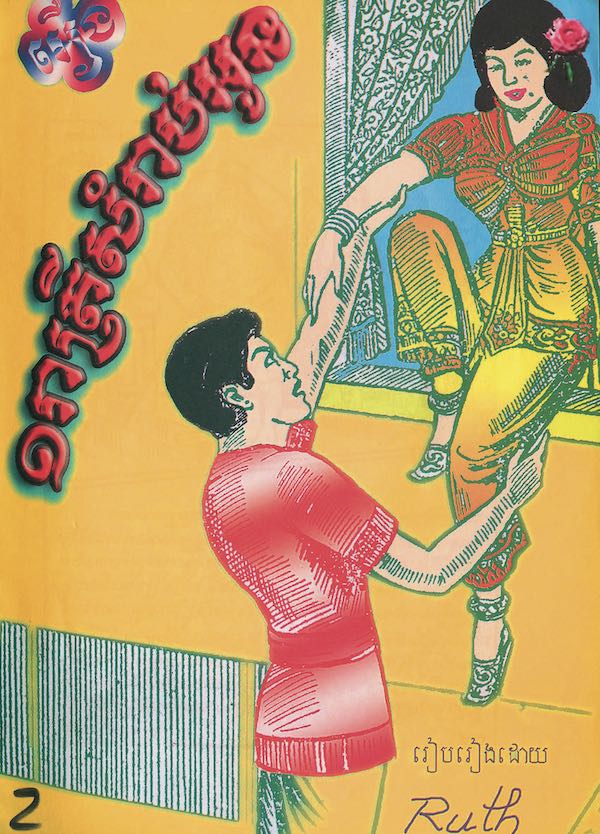
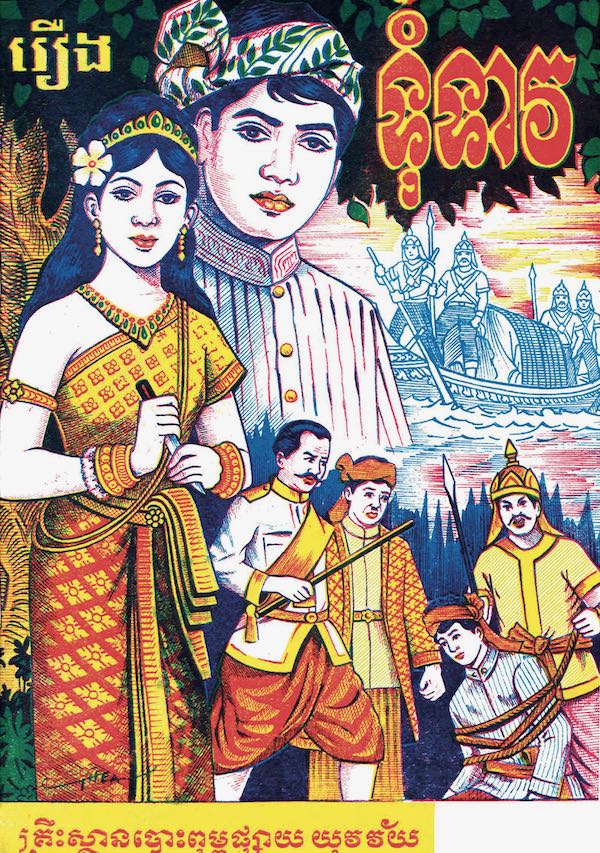
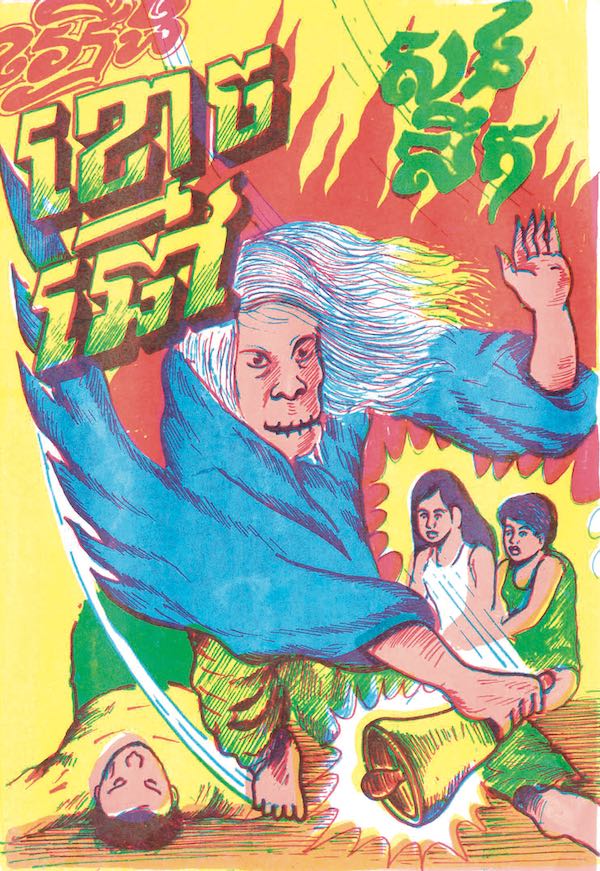
Sim Yang Pirhom began selling cooked rice in the market and Uth Roeun took up a position at the Ministry of Culture. Em Satya was relatively lucky in that he was able to keep working as a cartoonist for the Reaksmey Kampuchea newspaper. Under the pseudonym Nono, Satya became a popular political cartoonist whose comic book work was also serialised in the French-language newspaper Cambodge Soir.
Over the last few years there has been a resurgence in interest in Khmer comic art driven by handful of enthusiasts, private collectors and academics.
John Weeks began collecting Khmer comics as soon as he arrived in Cambodia in 2000 and was so impressed by the variations in style and content that in 2006 he co-founded Our Books, an organisation dedicated to the preservation and archiving of Khmer Comics.
Now Weeks and a team of Khmer artists divide their time between creating new educational comics for the NGO sector and tracking down comic ‘masters’ and their works.
“We just don’t know where most of the artists are. We think that most of them just disappeared when they went onto other work,” Weeks says. “A lot of the comics we find are cheap copies, some have even been reproduced through tracing. If we want to find the originals and preserve them we are going to have to find the masters”.
“I think that the Cambodian influences of my childhood are clear in the way that I tell a story”
Séra, French-Khmer graphic novelist
Experts and amateur enthusiasts agree that their interest in Khmer comic art stems from the belief that they are more than simple copies of the French styles students may have been exposed to in the 1960’s.
Weeks believes that the style is truly unique and related to a long history of telling stories through pictures in Cambodia.
“They have their own distinctive style. Romance is really Khmer and there are real classical references in the art,” he explains.
“In a romance comic, if somebody is in love they are going to use very specific body language. Say it’s a guy who’s in love, he will be lying on his back, his head on his hand and the other across his chest”.

The French-Khmer graphic novelist Séra returned to Cambodia last month to exhibit at the Centre Culturel Français, from the Khmer translation of his graphic novel focusing on the years of the Pol Pot regime, ‘Water and Earth’.
Relatively unknown in Cambodia, Séra’s work has been critically acclaimed in France, where he has lived since he was 14, though he still feels that there is a distinctly Khmer flavour to his work.
“I think that the Cambodian influences of my childhood are clear in the way that I tell a story,” Séra says. “It’s not like a straight line, a highway, I take my time and I want to touch the heart and not just the eye… It is not something the French authors did, I think that is my Cambodian part”.
In tandem with the exhibition, Séra also taught his second week-long series of graphic-novel workshops for local artists. He too explains the high attendance of his workshop as evidence of a longer history of pictures telling stories than the relatively short history of the comic in Cambodia.
“There is a lot of connection with the Cambodian culture and this way of telling stories, because of the heritage, because of what we have done with the Angkor-style bas reliefs,” Séra says. “Telling a story through images makes sense to Khmer, we have a predilection for the comic. It speaks to us”.
In joining the World Trade Organisation, the Cambodian government committed to the protection of intellectual copyrights. If this commitment is enforced in law there may yet be hope on the horizon for a new generation of Khmer comic artists.
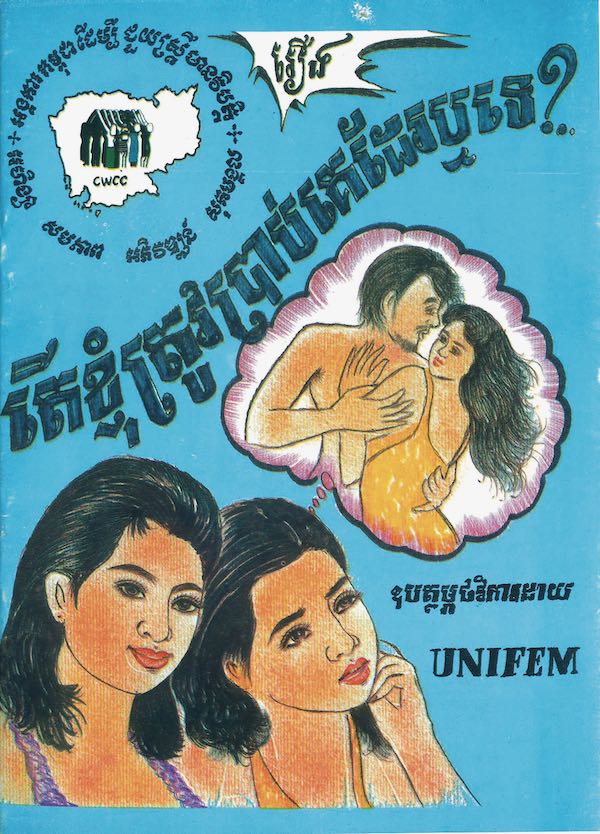
As well as the students studying at Séra’s workshops, there are now 150 pupils studying comics at the Phare art school in Battambang. Senior tutor at the school Srey Bandol describes the course as “really popular.”
“Visiting artists have helped and now we have students that are getting very good and they want to sell more than what we print for the local market,” Bandol says.
For the masters too, copyright protection could mean a return to making a living from their first love. Each time Uth Roeun finds a copy of one of his comics on a market stall it is a bittersweet experience. Although he his proud to see that his works are still popular they are often printed without his name.
Nevertheless, Roeun still draws and writes comic books. The tale of his youth as a young soldier in the Lon Nol years and the childhood sweetheart he lost to an arranged marriage is the latest he has included in the Association of Cambodian Artist’s Friends’ newsletter.
Em Satya’s career was almost cut short by a stroke in 2000 that paralysed his right arm, but through an immense effort of will, he retrained himself to draw with his left hand and now illustrates children’s stories.
Sim Yang Pirhom has pitched an educational romance comic on HIV prevention to the Ministry of Women’s Affairs and is confident that it will be accepted.
Uth Roeun still hopes that there will be a market once publishers take comics and copyrights seriously “I hope, they are still popular in the Khmer mind,” he says.
